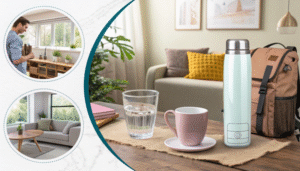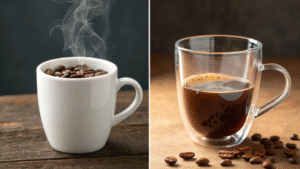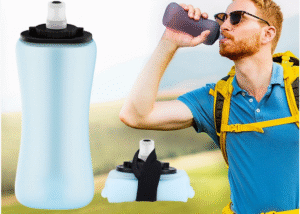Are you trying to position your reusable bottle brand around health? You see consumers obsessed with "pure" and "natural" water, but you’re unsure how to tap into that trend effectively.
The "healthiest" water is subjective. Spring and mineral waters offer natural minerals, while purified water guarantees contaminant removal. The key is understanding these perceptions to market your reusable bottles as the ultimate solution for pure, daily hydration.
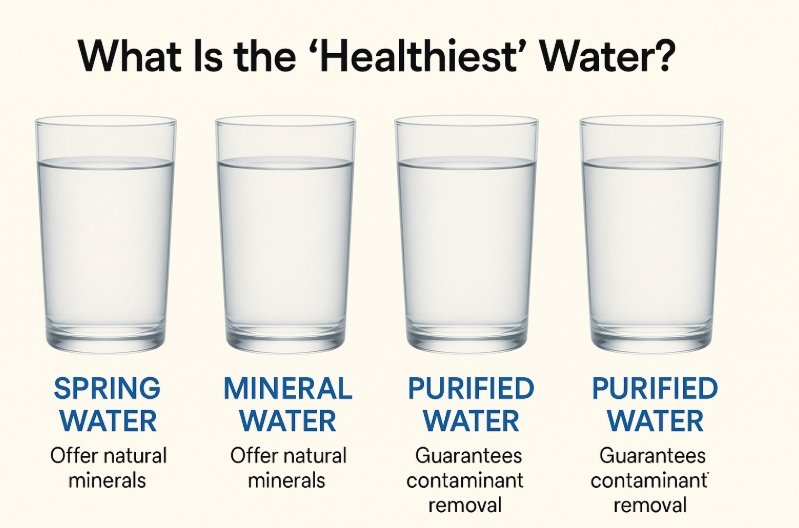
As a drinkware developer, the bottled water aisle is a goldmine of market research. For years, I've watched how brands use words like "spring," "artesian," and "purified" to sell a simple product: water. Their success shows us what consumers value. They aren't just selling water; they're selling trust, purity, and health. We can use these same insights to design and market reusable bottles that deliver on those promises far better than any single-use plastic ever could.
Who has the cleanest water to drink?
Is your brand message about purity getting lost? You want to offer a product that feels clean and safe, but "clean" can mean different things to different people, confusing your marketing efforts.
"Clearest" is a matter of consumer trust. Some trust nature (spring water), while others trust science (purified water with low TDS). Truly clean drinking water comes from a trusted source carried in a high-quality, non-leaching reusable bottle.
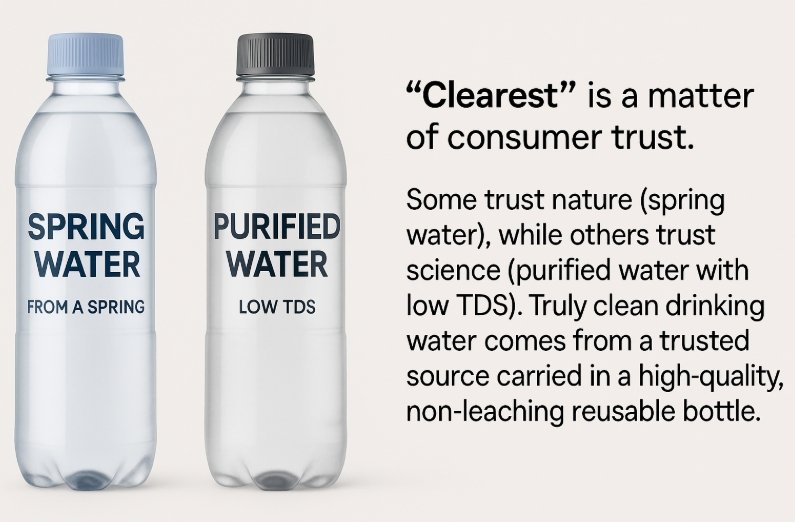
I once worked with a brand that was stuck between marketing their new glass bottle as "natural" or "scientifically pure." I told them to look at the water market. Does their customer trust the story of a pristine mountain spring or the guarantee of a multi-step filtration process? By understanding this, they could align their entire brand message. The truth is, the cleanest water is the water you trust, carried in a bottle you know is safe. The reusable bottle is the final, crucial step in that chain of trust.
Deconstructing the Idea of "Clean"
For a product developer like Emily, "clean" is both a technical specification and a marketing concept. It’s vital to understand how consumers interpret this term so you can build a product and a story that resonates.
- Natural Purity (Spring/Mineral Water): This concept relies on the idea that water from a natural, untouched source is inherently cleaner and healthier. It's minimally processed to preserve its natural mineral content. Brands like Evian or Fiji have built empires on this narrative. For reusable bottles, this translates to using materials that don't alter taste, like glass or high-grade 18/8 stainless steel, and using marketing imagery that features nature and wellness.
- Scientific Purity (Purified Water): This concept appeals to consumers who are wary of invisible contaminants. Purified water, often sourced from municipal supplies, undergoes processes like reverse osmosis, distillation, or deionization. Brands like Aquafina and Dasani champion this approach. This aligns with reusable bottles made from proven-safe materials like BPA-free Tritan or PP, often with features like hygienic spout covers. The marketing message is about safety, technology, and reliability.
Understanding this distinction allows you to position your drinkware line effectively. Are you selling a piece of nature or a piece of technology? Both are valid paths to convincing a customer your bottle is the cleanest way to drink.
Which bottled water has the least plastic in it?
Worried about microplastics? The constant news creates anxiety for consumers, making it difficult to position any plastic-based products, even high-quality reusable ones, without addressing this fear head-on.
Glass-bottled waters like Mountain Valley Spring or Acqua Panna inherently have no plastic leaching from the container. However, the ultimate way to minimize plastic ingestion is by using a trusted reusable bottle made of glass, stainless steel, or stable, certified plastic.
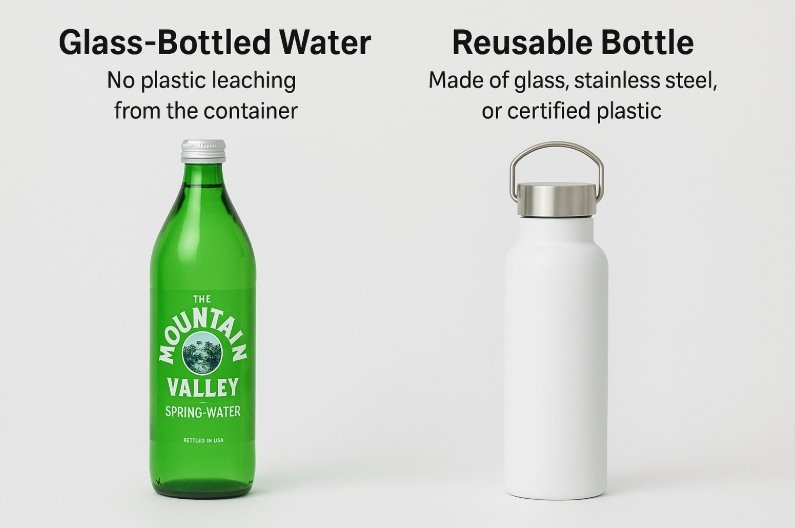
This question comes up all the time. While the direct answer is "water in glass bottles," I always encourage my partners to see the bigger picture. The conversation about microplastics from single-use bottles is the single best marketing tool for the reusable bottle industry. It opens the door for us to educate consumers. We can explain that the real solution isn't switching from a PET bottle to a glass one for every drink; it's switching to a permanent, high-quality reusable bottle made from a material designed for stability and long-term safety.
Shifting the Conversation from "Less Plastic" to "No Plastic Waste"
The fear of microplastics is a powerful motivator for consumers. As a product developer, you can address this fear directly and position your product as the superior solution. Single-use bottles, even glass ones, create waste. The reusable bottle is the hero of this story.
- Acknowledge the Concern: Start by validating the customer's concern. Yes, studies have shown that single-use PET bottles can shed microplastics, especially when exposed to heat or reused improperly.
- Introduce Stable Materials: This is where you highlight the quality of your product. Explain the difference between single-use PET and durable, reusable materials.
- Stainless Steel & Glass: These are the easiest sells. They are inert materials and do not shed plastics because they contain no plastic.
- High-Quality Plastics (Tritan/PP): This requires more education. Explain that materials like Tritan are copolyesters specifically engineered for stability and durability. They are certified BPA-free and BPS-free and are not comparable to the flimsy PET used for disposable bottles.
- Focus on the Long-Term Solution: The core message is that a reusable bottle eliminates the continuous cycle of buying, using, and disposing of plastic bottles. It gives the user complete control over their water source and their container. This shifts the customer's mindset from a passive consumer to an active participant in their own health and environmental impact.
By tackling the microplastic issue head-on, you build trust and showcase the clear benefits of investing in a well-made reusable bottle.
What is the purest and healthiest water?
Trying to market your bottle with a "health and wellness" angle? The terms "pure" and "healthy" are thrown around so much they’ve lost meaning, making it hard to create a message that stands out.
"Purest" often refers to purified water with minimal minerals (low TDS), while "healthiest" can refer to mineral water that provides electrolytes. The ideal combines both: water free from contaminants but retaining beneficial minerals, carried in a non-leaching reusable bottle.
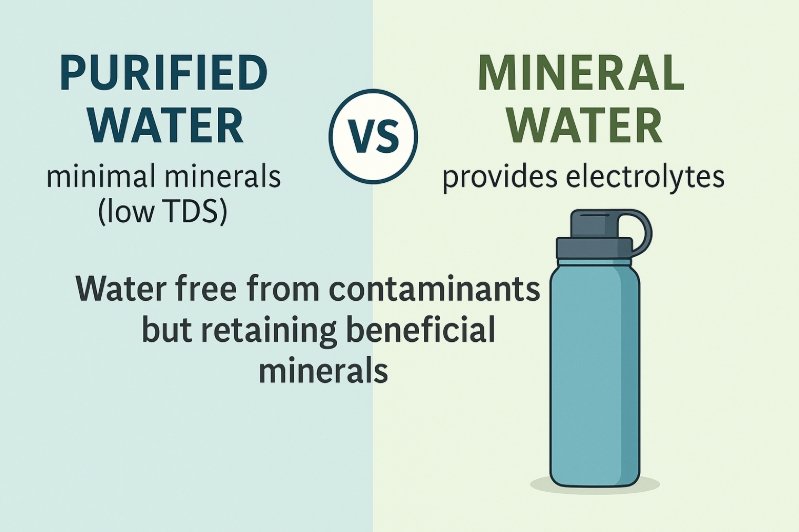
I find this debate fascinating because it reveals a core tension in the wellness market: is it better to add good things or to remove all bad things? Some consumers want the minerals from Fiji (addition), while others want the guaranteed purity of Smartwater (removal). A successful drinkware brand doesn't have to pick a side. Instead, you provide the perfect, neutral vessel. Your bottle's job is to perfectly preserve the water quality the user chooses, whether it’s tap, filtered, or mineral water, without adding anything unwanted.
Defining "Pure" and "Healthy" for Your Brand
To develop a product line that aligns with wellness trends, it’s crucial to understand what these buzzwords mean to your target consumer. Then, you can design features and marketing that speak directly to their definition of health.
| Consumer Priority | Water Type they Prefer | How Your Reusable Bottle Aligns |
|---|---|---|
| Purity (No Contaminants) | Purified, Distilled | Use materials like glass or 18/8 stainless steel that are inert and won't leach chemicals. Highlight hygienic features like covered spouts or easy-to-clean designs. |
| Health (Natural Minerals) | Spring, Mineral, Alkaline | Market bottles that preserve taste. Glass is the champion here. For steel, emphasize the high-quality 18/8 grade that prevents any metallic aftertaste. Avoid materials known to retain flavors. |
| Enhanced Performance | Electrolyte, Alkaline | Design bottles for an active lifestyle. Wide mouths for adding powders, infusion baskets for fruit, and markings for measuring intake are all features that appeal to this user. |
Your product development strategy doesn't need to decide which water is best. Instead, you should ask: "What kind of water will my ideal customer be putting in this bottle?" If you're targeting athletes, features supporting electrolyte drinks are key. If you're targeting design-conscious purists, a minimalist glass or steel bottle is the answer. By providing the ideal container for their chosen "healthy water," your bottle becomes an essential part of their wellness routine.
Which bottled water is 100% spring water in the USA?
How can you learn from the marketing of big water brands? You see their success and want to understand the specific branding tactics they use to build such powerful consumer trust and loyalty.
Several major US brands, including Poland Spring, Arrowhead, and Ozarka, are marketed as 100% natural spring water, sourcing from multiple springs. Their branding heavily emphasizes nature, trust, and regional identity, creating powerful consumer loyalty.
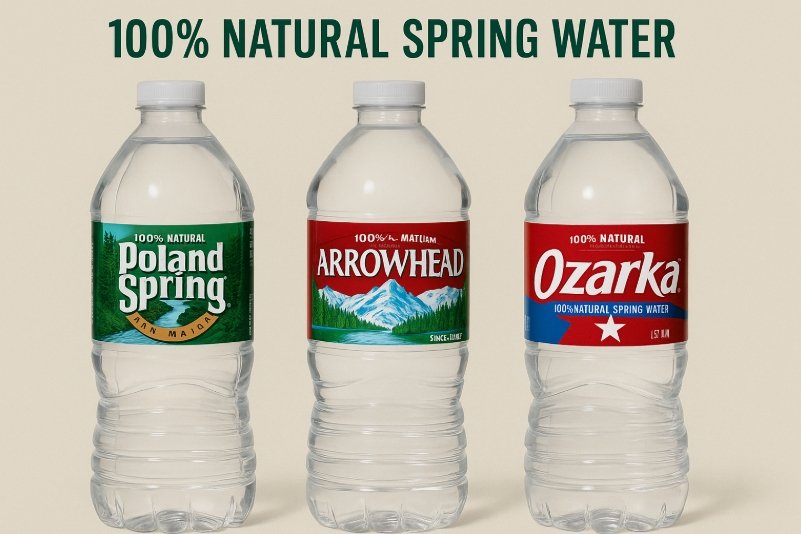
The success of these brands is a masterclass in storytelling. They don't just sell water; they sell the story of a specific place—a mountain in Maine, a spring in Texas. As a drinkware consultant, I tell my clients to study this. You don't need a spring, but you do need a story. Is your brand's story about sustainable materials? Is it about innovative design from your city? Is it about enabling a life of adventure? These spring water brands prove that a strong, authentic story is what turns a simple commodity into a trusted brand.
Learning from the Spring Water Playbook
The strategies used by major spring water brands offer a clear blueprint for any reusable bottle company looking to build a loyal following. It's about creating a narrative that goes beyond the physical product.
- The Power of Origin: These brands tie their identity to a specific, tangible place. Poland Spring is synonymous with Maine. Arrowhead is tied to the mountains of California. Your reusable bottle brand can do the same. Where are you based? What inspires your designs? Tell that story. A brand based in a coastal city could have a line of ocean-inspired colors. A brand from a tech hub could focus on smart lids and innovative engineering.
- A Vocabulary of Trust: Look at their words: "Natural," "Pure," "Since 1845," "Source." These words communicate authenticity and reliability. Your brand can build its own vocabulary. Words like "Certified BPA-Free," "18/8 Food-Grade Steel," "Lifetime Warranty," and "Sustainable Materials" serve the same purpose. They are promises to your customer.
- Visual Storytelling: Their labels are filled with images of mountains, forests, and pristine springs. This visual language instantly communicates their core message. Your brand's photography and design should do the same. If you sell to athletes, show your bottles on the trail. If you sell to urban professionals, show them on a stylish desk.
By adopting this playbook, you can elevate your product from a simple container to a symbol of a story and a set of values your customers want to be a part of.
Conclusion
Understanding what consumers seek in "healthy water"—purity, minerals, or trust—allows you to position your reusable bottles as the safest, most sustainable choice for their preferred type of hydration.

